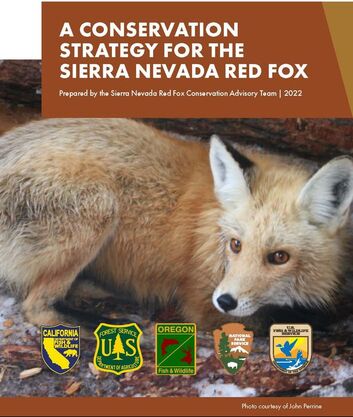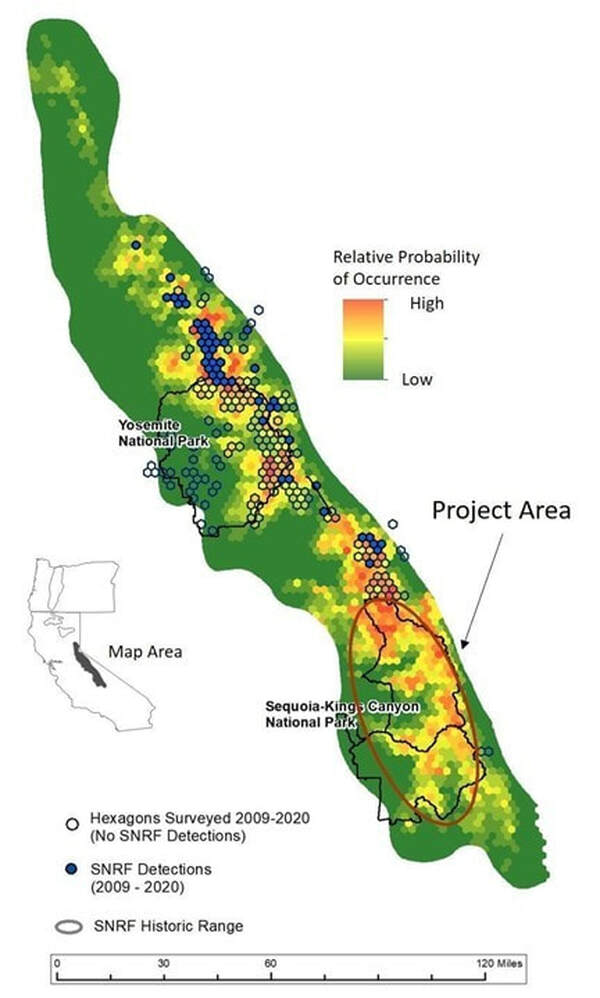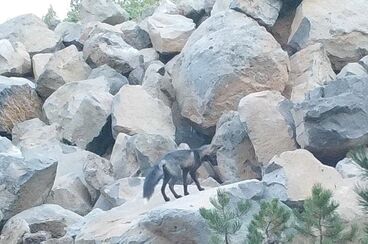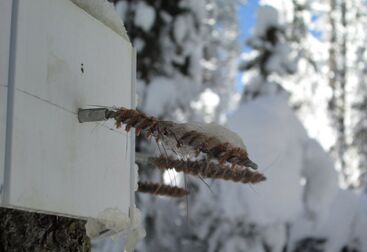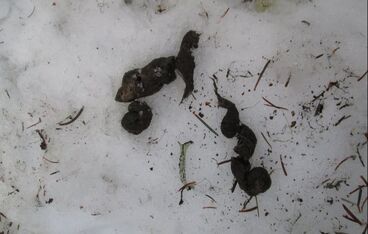Advancing Conservation and Recovery of Endangered Sierra Nevada Red Foxes in the
Southern Sierra Nevada of California
The southern Sierra Nevada of California is within the historical range of the Sierra Nevada red fox (Vulpes vulpes necator; SNRF). Due to so few SNRF existing in isolated populations, the U.S. Fish and Wildlife Service listed the Sierra Nevada Distinct Population Segment as Endangered in 2021 under the federal Endangered Species Act. A lack of survey effort in the southern Sierra Nevada has hindered recovery and conservation efforts in this area. If no action is taken, making informed conservation decisions to improve population status and connectivity for SNRF will be more challenging.
Southern Sierra Nevada of California
The southern Sierra Nevada of California is within the historical range of the Sierra Nevada red fox (Vulpes vulpes necator; SNRF). Due to so few SNRF existing in isolated populations, the U.S. Fish and Wildlife Service listed the Sierra Nevada Distinct Population Segment as Endangered in 2021 under the federal Endangered Species Act. A lack of survey effort in the southern Sierra Nevada has hindered recovery and conservation efforts in this area. If no action is taken, making informed conservation decisions to improve population status and connectivity for SNRF will be more challenging.
|
The SNRF Conservation Advisory Team (SCAT), led by the California Department of Fish and Wildlife, and in which Wildlife Ecology Institute was a member, recently finalized the document, A Conservation Strategy for the Sierra Nevada Red Fox, This Conservation Strategy is a comprehensive and range-wide (California and Oregon) conservation strategy for this montane subspecies, and it will be periodically updated as new information becomes available.
Within this Conservation Strategy, SCAT specifically highlighted the southern Sierra Nevada as a high priority region due to the vast amount of protected alpine habitat, but also the requirement for additional surveys to fully understand the size and range extent for SNRF. Our project goal is to determine SNRF occupancy, and to identify potential unoccupied areas suitable for potential translocation of SNRF, should this become necessary for improving the future status of SNRF in this region. |
With our Project Partners, we are conducting remote camera-trap surveys and genetic sampling during 2023-2025 within the southern extent of the SNRF’s historic range to determine the species' distribution and genetic health in this region, as this will be foundational support for future conservation and recovery planning for SNRF. Informed conservation decision-making must be supported with accurate and complete information.
Focused data collection efforts for any detections of this subspecies will help improve and inform conservation decisions. This includes updating existing habitat models and species recovery efforts, such as potential translocations (population augmentations or reintroductions, depending on circumstances) of SNRF into areas that contain suitable habitat, as a conservation benefit to increase the statewide population and distribution, and improve population fitness. Implementing these recovery actions requires a thorough understanding of the species' distribution and genetic integrity (i.e., genetic diversity and relatedness to other SNRF populations) throughout their range, especially within regions where reintroductions are planned.
Our field data collection for surveying for Sierra Nevada red foxes includes the use of motion-sensing infrared trail cameras, hair-snagging devices to collect DNA at trail-camera locations, and professionally trained conservation dogs to search for scat.
|
Contemporary species distribution model based on the best-available science for use to help prioritize and systematically survey critical areas within the southern Sierra Nevada as described in the Conservation Strategy (C. Stermer, In prep.). Areas in red are generally highest elevation locations, which are considered high-priority areas for surveys
|
Trail cameras are a critical tool for surveying rare wildlife species over large areas. However, many areas remain unsurveyed for Sierra Nevada red foxes, including remote wilderness areas within the southern Sierra Nevada.
Hair-snagging devices, such as this series of gun brushes placed at baited camera stations, can collect hairs from which DNA can later be extracted. This genetic information can be used to identify sex, subspecies, and many genetic characteristics of populations.
Scat provides valuable information that can be extracted from DNA. We will be using professionally trained scat-detection dogs on our project to aid with detection of Sierra Nevada red foxes.
|
PROJECT PARTNERS (logos coming soon!)
California Department of Fish and Wildlife
Sequoia and Kings Canyon National Parks
U.S. Fish and Wildlife Service
Sequoia Parks Conservancy
Sequoia and Kings Canyon National Parks
U.S. Fish and Wildlife Service
Sequoia Parks Conservancy
Copyright 2024 Wildlife Ecology Institute
